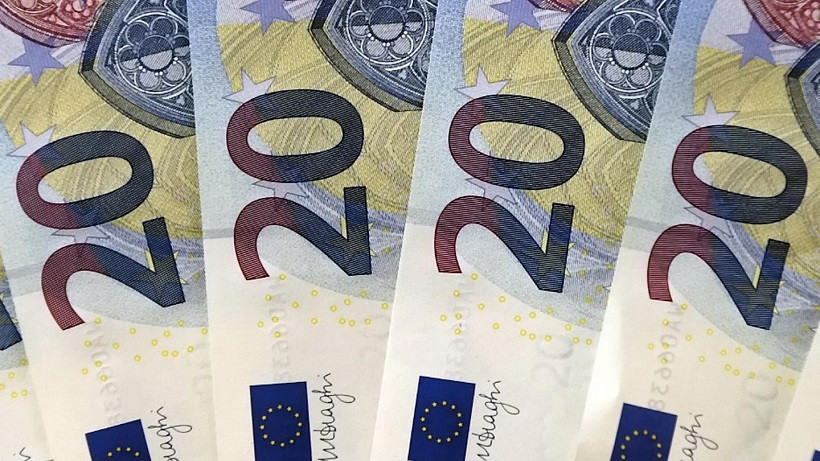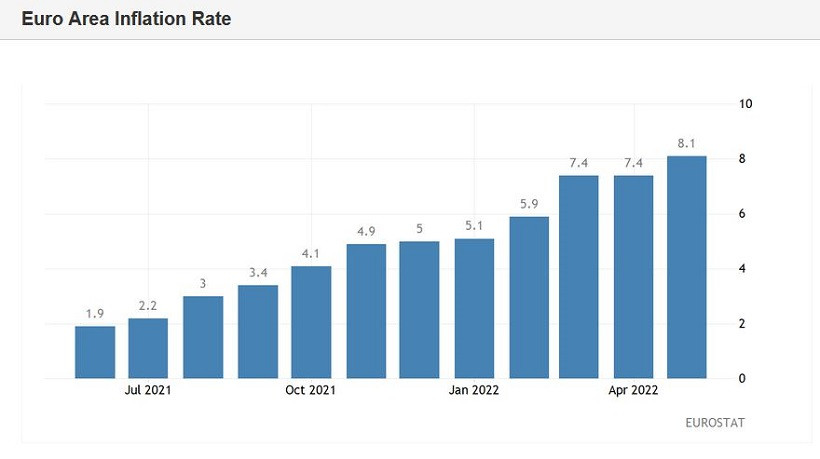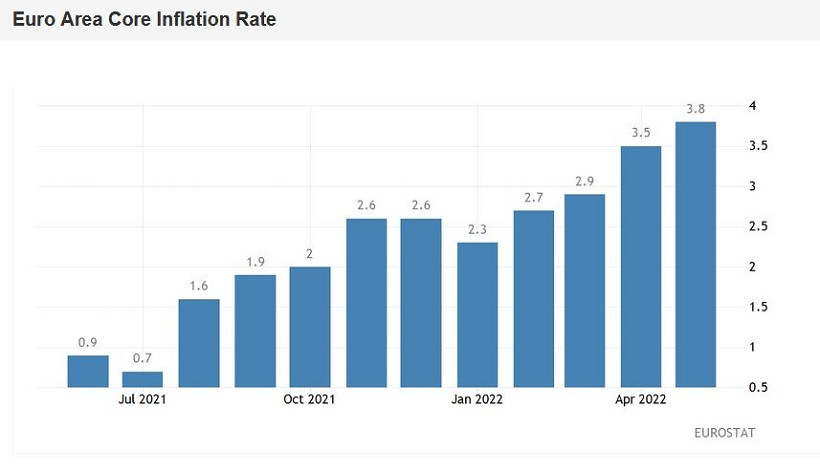
The EUR/USD pair cannot determine the vector of its movement. Throughout yesterday, traders showed a fighting spirit, updating the monthly price maximum (1.0780). However, this battle fuse ran out: the buyers of the pair did not dare to storm the 8th figure. Market participants recorded a profit, after which the price began to gradually slide to the middle of the seventh figure. During the Asian session on Tuesday, bearish sentiment intensified, amid the growth of the oil market and increased demand for a safe dollar.
At the moment, the pair is moving rather by inertia. Traders are in no hurry to return to the area of the 6th figure, but at the same time, they do not dare to re-hike to the resistance level of 1.0800. Despite the record growth of German and pan-European inflation and the optimistic mood of the market against the background of quarantine easing in China, the pair is still trading in the 80-point price range, without leaving the seventh figure.
Preliminary data on inflation growth in the eurozone were published today. The release was once again released in the "green zone", exceeding the rather bold forecast estimates. The consumer price index again distinguished itself with record growth, thereby confirming the trends of recent months. Thus, the overall CPI in May shot up, reaching 8.1% (in April it was at the level of 7.4%). This is another historical record, that is, the maximum value of the indicator for the entire history of observations (since 1997). The result was higher than most experts' forecasts: analysts polled by Reuters expected it to come out at 7.7%. The core consumer price index (excluding volatile energy and food prices) also showed strong dynamics, rising to a target of 3.8%. Analyzing the structure of the release, we can conclude that energy prices have increased the most in the eurozone countries. Last month, they increased by 39.2%. Prices for food, alcohol, and tobacco products increased by 7.5%. The cost of services increased by 3.3% compared to 3.5% in April.
The market showed a very modest reaction to the record release. The euro/dollar pair slowed its decline but did not turn 180 degrees. First, traders were ready for such results, especially after the release of yesterday's data on the growth of German inflation. Second, traders do not expect the ECB to further tighten its rhetoric - representatives of the European regulator have already outlined the trajectory along which they will move in the foreseeable future. Christine Lagarde rejected the idea of a 50-point increase at the July meeting, saying that such a decision "has its price" (obviously unacceptable). At the same time, she agreed that the deposit rate will be gradually increased, bringing it to zero by September. She also did not rule out (but did not announce) "further increases." Judging by the reaction to today's release, traders are not considering the possibility that the European Central Bank will somehow adjust the designated program of actions towards tightening.


Meanwhile, the US dollar index began to "show signs of life" again this week, after a systematic, but multi-day decline. The greenback began to gain momentum against the backdrop of the growth of the oil market, which could strengthen inflationary growth in the United States, forcing the Federal Reserve to take more drastic measures to tighten monetary policy. Today, a barrel of Brent crude oil is already trading around $ 119-120, against the background of a partial ban by the EU on the import of Russian oil and petroleum products. According to ING analysts, "black gold" will continue to rise in price (at least to $ 122 per barrel in the coming weeks), provoking a "domino effect". Let me remind you that the main contribution to the record inflation in the United States over the past 40 years has been the rise in energy prices. Therefore, recent trends may give a new impetus to inflationary processes, whereas in the US the first signs of a slowdown in CPI and PCE growth have just begun to emerge.
If American inflation shows a jumpy growth again, then the question of a "forced pause" in the process of tightening the Fed's monetary policy will disappear by itself. Let me remind you that according to the minutes of the last meeting of the Federal Reserve, the regulator plans to raise the rate in June and in July, while further steps (rates) will depend on the dynamics of inflationary growth in the United States. Such a supposed scenario exerted some pressure on the greenback. However, now dollar bulls have reminded themselves again, against the background of the growth of the oil market and the strengthening of anti-risk sentiment.
And yet, despite such "emotional swings", it is risky to open sell or buy orders for the EUR/USD pair now. Traders have not yet decided on the vector of price movement. Short positions will be in priority when the bears gain a foothold under the 1.0700 mark, that is, within the 6th figure. In this case, a further descent to the support level of 1.0610 is likely (the Tenkan-sen line on the daily chart). It is advisable to consider longs only after overcoming the 1.0800 mark and fixing in the area of the 8th figure. While the pair is "hanging out" within the 7th figure, it is best to take a wait-and-see position.